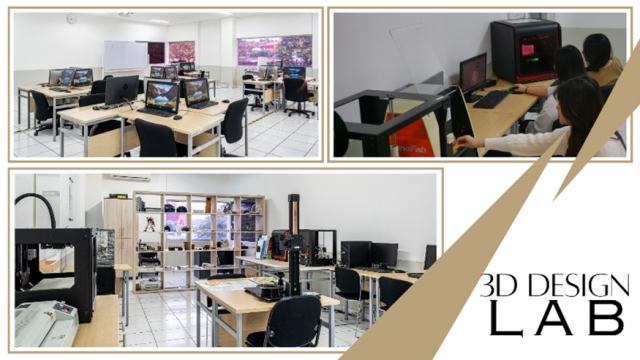Three-dimensional (3D) Design Laboratory
Introduction
The Three-dimensional (3D) Design Laboratory (TDL) provides an excellent facility that students can use to develop their product design skills. In addition to providing tools and technologies, this laboratory also creates a conducive environment for enhancing creativity and innovation. Various workshops, seminars, and collaborative projects are disseminated, so that students can learn from experienced lecturers and practitioners and gain direct insight into the needs and challenges of the related field. Supported by advanced Computer Aided Design (CAD) software, such as CATIA and Inventor, also other facilities for prototyping and digital manufacturing, students can turn their creative ideas into real products. Each software is widely used in industry to design products with a high level of precision and detail. CATIA allows students to create highly detailed and accurate 3D models. Moreover, by using CATIA, students can design a variety of products, from small components to complex structures. Inventor allows students to create and visualize their designs easily. This software also supports integration with digital manufacturing processes, easing the transition from design to production.

Equipment and Facility
3D printer. This printer allows designers to create product prototypes faster and efficiently. Due its ability to print complex models directly from soft files, testing and design iteration can be done more quickly. At Binus ASO, the TDL has two 3D printers to support students in doing their project as well as national competitions.

GOM ATOS industrial 3D scanning technology. An industrial 3D scanning system that uses optical technology to capture the shape and dimensions of objects with high accuracy. This system relies on cameras and projectors to produce detailed 3D data. Those data are used in various industrial applications, such as processing and analyzing shape and dimensions of objects, ensuring products meet quality standards, and assisting in product design and development. The main advantages of this technology are improving quality control, accelerating product development, and ensuring precision in the manufacturing process.

Desktop engraving and milling 3D technology. A compact system that uses Computer Numerical Control (CNC) technology to carve materials with high precision. Desktop engraving technology is designed to create fine details on the surfaces of materials such as wood, acrylic, and metal, with high accuracy. It is ideal for making name sign, decoration, and prototyping. Meanwhile, desktop milling technology is used to remove material from blocks, producing 3D objects with complex shapes and tight tolerances. This typically useful in producing engineering components, prototype models, and custom products. Both technologies enable the production of complex details and high customization in a small workplace. Moreover, it offers efficiency and flexibility for a wide range of industrial and creative applications.

UP BOX 3D printer. This 3D printer is designed to provide stable performance and high-quality printing results with a relatively large print size (255 mm x 205 mm x 205 mm). Renowned for its ease of use and reliability, the UPBOX is equipped with advanced features, such as balance heating system, enclosed printer to reduce the risk of material warping, and intuitive user interface. This printer supports various types of filaments, including ABS, also equipped with UP Studio software which makes the design and printing process easier. UP BOX 3D printer is ideal for use in educational, prototyping, and small production environments since it offers a combination of practical function and high quality to meet a wide range of 3D printing needs.

Supported Courses
At Binus-ASO School of Engineering, the TDL supported the following courses:
- PDEN6031011 Digital Modeling and Simulation
- PDEN6068011 Design Engineering Features
